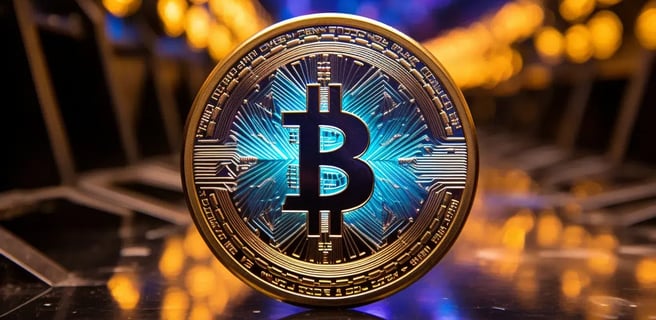What is Bitcoin?
DSCrypto


Bitcoin (BTC) is a cryptocurrency (a virtual currency) designed to act as money and a form of payment outside the control of any one person, group, or entity. This removes the need for trusted third-party involvement (e.g., a mint or bank) in financial transactions.
Bitcoin was introduced to the public in 2009 by an anonymous developer or group of developers using the name Satoshi Nakamoto. It has since become the most well-known and largest cryptocurrency in the world. Its popularity has inspired the development of many other cryptocurrencies.
Read on to learn more about the cryptocurrency that started it all—the history behind it, how to buy it, mine it, and what it can be used for.
Key Takeaways:
Bitcoin is the end product of the work of many people, but it is generally accepted that Satoshi Nakamoto created it and introduced it in 2008.
Bitcoin is the public blockchain used to create and manage the cryptocurrency of the same name.
Bitcoin mining is the race between miners to hash specific values and other block information to find the solution to a hashing problem and add a block to the blockchain. The winning miner is rewarded with bitcoins.
Bitcoin can be used by speculators, investors for investing purposes, and consumers for purchases or value exchange.
There are many risks involved with investing in and using bitcoins, including volatility, fraud, and theft.
The world’s first widely-adopted cryptocurrency. With Bitcoin, people can securely and directly send each other digital money on the internet.
Bitcoin was created by Satoshi Nakamoto, a pseudonymous person or team who outlined the technology in a 2008 white paper. It’s an appealingly simple concept: bitcoin is digital money that allows for secure peer-to-peer transactions on the internet.
Unlike services like Venmo and PayPal, which rely on the traditional financial system for permission to transfer money and on existing debit/credit accounts, bitcoin is decentralized: any two people, anywhere in the world, can send bitcoin to each other without the involvement of a bank, government, or other institution.
Every transaction involving Bitcoin is tracked on the blockchain, which is similar to a bank’s ledger, or log of customers’ funds going in and out of the bank. In simple terms, it’s a record of every transaction ever made using bitcoin.
Unlike a bank’s ledger, the Bitcoin blockchain is distributed across the entire network. No company, country, or third party is in control of it; and anyone can become part of that network.
There will only ever be 21 million bitcoin. This is digital money that cannot be inflated or manipulated in any way.
It isn’t necessary to buy an entire bitcoin: you can buy just a fraction of one if that’s all you want or need.
